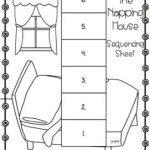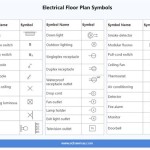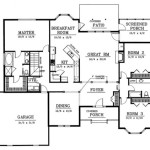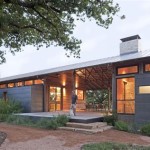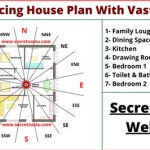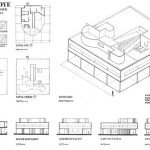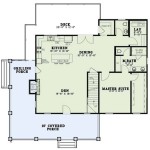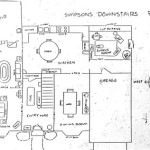Small Urban House Plans: Maximizing Space and Style in the City
Urban living often presents the challenge of limited space. However, with thoughtful planning and innovative design, small urban house plans can offer comfortable and stylish living solutions. This article explores key considerations for maximizing space and functionality in small urban dwellings.
Prioritizing Functionality
Functionality reigns supreme in small urban house plans. Every square foot must serve a purpose. Open-plan layouts are a popular choice, creating a sense of spaciousness by combining living, dining, and kitchen areas. Multi-functional furniture, such as sofa beds and expandable dining tables, further enhances space utilization. Strategic storage solutions, including built-in shelving and under-stair storage, are essential for keeping clutter at bay.
Vertical Space Optimization
Maximizing vertical space is crucial in small urban homes. High ceilings can create an illusion of spaciousness and allow for the incorporation of lofted sleeping areas or storage spaces. Vertical shelving units and tall cabinets maximize storage capacity without consuming valuable floor space. Skylights and large windows bring in natural light, further enhancing the sense of openness.
Outdoor Living Integration
While urban lots may be small, integrating outdoor living spaces can significantly extend the usable area. Balconies, patios, and rooftop terraces provide opportunities for relaxation, entertainment, and gardening. Large windows and sliding glass doors blur the lines between indoor and outdoor spaces, creating a seamless flow and maximizing natural light.
Sustainable Design Principles
Sustainable design is increasingly important in urban environments. Small urban house plans can incorporate energy-efficient features such as solar panels, high-performance windows, and green roofs. Water-saving fixtures and appliances contribute to environmental responsibility and reduce utility costs. Utilizing locally sourced and recycled materials minimizes the environmental impact of construction.
Flexibility and Adaptability
Life in the city is dynamic, and small urban house plans should reflect this. Flexible spaces that can adapt to changing needs are highly desirable. Movable walls and partitions can create temporary rooms or open up the space as needed. Modular furniture allows for easy reconfiguration and adaptation to different uses.
Smart Home Technology
Integrating smart home technology can further enhance the functionality and efficiency of small urban homes. Smart thermostats, lighting systems, and appliances can be controlled remotely, optimizing energy consumption and enhancing convenience. Security systems and smart locks provide peace of mind and enhance safety.
Choosing the Right Plan
Selecting the right small urban house plan requires careful consideration of individual needs and lifestyle. Factors such as the number of occupants, desired amenities, and budget will influence the choice of plan. Consulting with an architect or experienced builder can provide valuable insights and ensure that the chosen plan meets specific requirements and local building codes.
Exploring Architectural Styles
Small urban house plans can embrace a variety of architectural styles. Modern minimalist designs prioritize clean lines and open spaces, while traditional styles incorporate classic architectural elements. Industrial-inspired designs often feature exposed brick and metal accents, while contemporary styles blend modern and traditional elements. Choosing an architectural style that complements the surrounding urban environment and reflects personal preferences enhances the overall aesthetic appeal.
Cost-Effective Construction
Building a small urban house can be a cost-effective housing solution. The smaller footprint translates to lower material costs and shorter construction timelines. Prefabricated or modular construction methods can further reduce costs and accelerate the building process. Choosing sustainable materials and energy-efficient features can also contribute to long-term cost savings.
Neighborhood Considerations
The location of a small urban house within a neighborhood plays a crucial role in the overall living experience. Proximity to public transportation, amenities, and green spaces enhances convenience and quality of life. Understanding the local zoning regulations and building codes is essential before embarking on a building project. Consider the neighborhood's character and choose a house plan that complements the surrounding architectural styles.
Maintenance and Upkeep
Small urban houses generally require less maintenance than larger homes. Smaller exterior surfaces translate to reduced landscaping and upkeep requirements. Energy-efficient features minimize utility costs and contribute to lower operating expenses. Choosing durable and low-maintenance materials for interior finishes further reduces upkeep demands.
Maximizing Natural Light
Natural light plays a vital role in creating a bright and inviting atmosphere in small urban houses. Large windows, skylights, and strategically placed mirrors can maximize natural light penetration. Open-plan layouts allow light to flow freely throughout the space. Choosing light-colored interior finishes further enhances the sense of brightness and spaciousness.

Townhomes Townhouse Floor Plans Urban Row House Plan Designers Small

Urban House Of Wood And Glass 1 Trendir Architecture Modern Interior Design

Blog On Modern Architecture Design Development And Modative Happenings Small House

Gmfplus Architects Narrow Lots The Simone House Plan Study Plans Starting At 99

A Skinny Solution For Small House Floor Plans

Two Story New Houses Custom Small Home Design Plans Affordable Floor

Cool Urban Houses Built On Narrow And Deep Sites

Urban Two Story Home Floor Plans Inner City Narrow Lot Design

27 Adorable Free Tiny House Floor Plans Craft Mart

House Plan 2 Bedrooms 1 Bathrooms Garage 3288 V2 Drummond Plans

